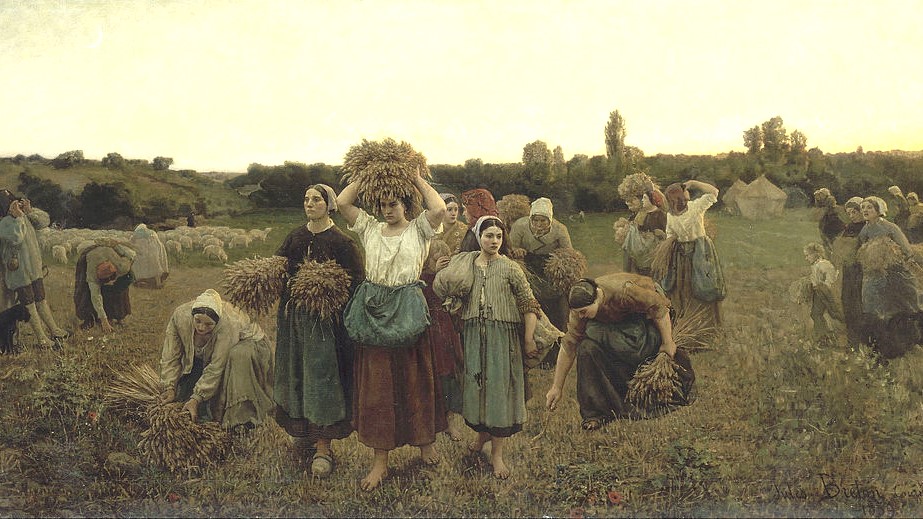Are we right to assume that malnutrition increases the risk of contracting sickness? Using rich historical data from the London Foundling Hospital 1892-1919, Eric Schneider finds that malnutrition did not affect whether or not individuals children contracted infectious diseases, but it did influence sickness the severity of their sickness from measles.
While people often assume that malnourished individuals are more likely suffer from disease, the evidence is mixed. In part, this is because some diseases are more nutrition-sensitive than others. However, it is also very difficult to test whether malnutrition affects sickness because people who are malnourished tend to be disadvantaged in lots of other ways. For instance, they may be poorer, live in more crowded and polluted areas, have lower education levels and have poorer access to clean water and sanitation. This makes it difficult to disentangle the effects of malnutrition from these other confounding factors.
The link between malnutrition and disease is very important to many explanations for historical patterns of disease. For instance, McKeown et al. (1975) argued that improving nutrition in nineteenth- and twentieth-century Britain explained the contemporaneous fall in mortality rates. Historians have also argued that the spread of infectious diseases during famines increased mortality (Dirks 1993). However, there is little direct historical evidence on the link between malnutrition and disease, and it is difficult to extrapolate from modern medical studies to historical periods: most medical studies fail to account fully for the confounding factors discussed above and were conducted when vaccination rates were high and malnutrition relatively uncommon, conditions dissimilar to most of history.
We can find rare historical evidence on how malnutrition affects disease in the extremely detailed records on child health kept at the London Foundling Hospital (Schneider 2021). The Foundling Hospital was an orphanage that cared for children of unwed mothers. The children entered the Hospital’s care in infancy though they lived with foster families in the countryside surrounding London until the age of five or six (see Figure 1 below). At that point, they returned to the Foundling Hospital’s main site in Bloomsbury, central London and lived there until they were 15 or 16.

I use the heights and weights of the children recorded at admission, their return from the countryside and their discharge from the hospital from 1892 to 1919 to understand the children’s nutritional status. These measurements can be compared to how healthy children grow today (according to the WHO). In infancy, 49% of the children at the Foundling Hospital were underweight (i.e. had low nutritional status) whereas this had declined to 14% by the time the children were five or six.
The Foundling Hospital recorded the main infectious diseases that the children were treated for in early childhood in the countryside. They also kept very detailed records from the infirmary on the main site in London, recording the diseases that each child was treated for and the length of time they were sick with each disease, the sickness duration. I focused on five highly infectious diseases: measles, mumps, rubella, chicken pox, and whooping cough. These diseases were prevalent in the Foundling Hospital, but only measles and whooping cough were deadly: the others simply made children very ill for a period of time. Figure 2 shows a stylized view of the share of children experiencing sickness durations of various lengths from each disease, i.e. roughly 10% (0.1 density) of children experiencing mumps had sickness durations of six days.

To separate the effect of malnutrition from other confounding factors, I use the fact that children moved regularly. Because the children’s weights were taken when they moved location, their nutritional status at that moment was only influenced by factors in the previous life stage. For instance, their mother’s income, living conditions, knowledge of hygiene, etc. would affect the child’s nutritional status at admission to the Foundling Hospital. But for the most part, none of these factors would affect the child’s propensity to contract or have a severe case of disease when they were fostered in the countryside. This is because the children were spread randomly across foster families. Likewise, the factors that would influence the child’s disease experience in the countryside could not affect their nutritional status taken before they moved to the countryside. This allows me to estimate the effect of malnutrition when the child was living with their mother on their disease experience in the countryside.
I find that malnutrition did not affect the propensity of children to contract these five diseases. This is likely because the diseases were so infectious that children would have caught them whether they were malnourished or not. However, I do find that children who were malnourished were sick for longer from measles and mumps and were more likely to develop complications from measles. Interestingly, malnutrition did not affect sickness severity from whooping cough despite historians having argued that it was nutrition sensitive.
So why does this research matter for understanding health issues today? While it highlights the importance of vaccinations against these diseases in high income countries, the direct policy relevance may apply more to low and middle income countries. While child malnutrition has been declining for the past twenty years, 13% of children under age five were underweight in 2020. This means that many children are still susceptible to increased sickness severity from measles because of their poor nutritional status. With climate change and its associated natural disasters, we are likely to see both increased food insecurity and potential disruptions in vaccination campaigns, making the link between malnutrition and measles severity particularly dangerous in the future.
More information:
- Open access full version of the paper is available here.
- Interview with the author on the paper on the Vox Talks Economics podcast here.
References:
Dirks, R. (1993). Famine and Disease (K. F. Kiple, Ed.; pp. 157–163). Cambridge University Press.
Mckeown, T., Record, R. G., & Turner, R. D. (1975). An interpretation of the decline of mortality in England and Wales during the twentieth century. Population Studies, 29(3), 391–422.
Schneider, E. B. (2021). The Effect of Nutritional Status on Historical Infectious Disease Morbidity: Evidence from the London Foundling Hospital, 1892-1919. CEPR Discussion Paper





